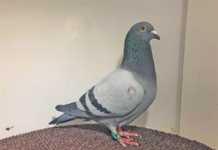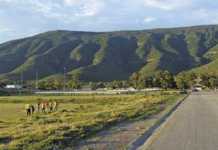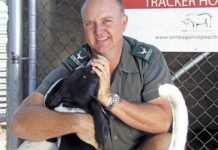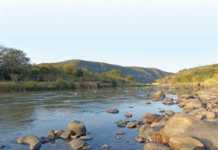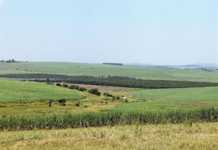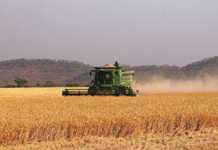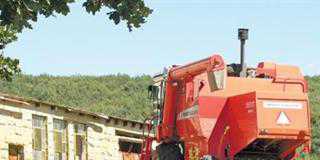The idea came to me after reading Farmer’s Weekly articles about the sorry state of Hartebeespoort Dam. All the attention on ‘fixing’ the dam made no sense to me if nothing was being done to keep pollution out of the rivers that feed it. The Jukskei is one of these and, being the most polluted river in the country, it is, in many respects, the most important one.
The Jukskei starts in the centre of Johannesburg and travels north, subsuming the other major city centre streams, such as the Braamfonteinspruit and the Sandspruit. Later the Modderfonteinspruit joins it and, later still, the Klein Jukskei.
Outside Johannesburg, the Jukskei is itself swallowed by the Crocodile River, as is the Henops a kilometre later – and all of these scandalously filthy waters then tumble into Harties, the phosphate load feeding the algae that turns the dam lurid green.
In my desire to walk the length of the Juskei, my first problem was working out where to begin. On maps, the Jukskei is shown to start at Bruma Lake, but certain historical writings have the it rising on the farm of Doornfontein, now the eastern sector of the city centre.
The first eye
The search for the eye of the Jukskei became a saga in its own right. Paul Fairall, the fiery chairperson of the Jukskei Catchment Forum, insisted it was under the Standard Bank Tennis Arena, opened in 1986, and now part of the Ellis Park Sports Complex. I pitched up and convinced the watchman to show me the pumps which another source, Mike Dunk of Standard Bank, had said were established under the arena’s outer passage.

Two pumps operate under the Standard Bank tennis arena.
The watchman duly produced four double-sided metal crooks and two steel poles. Placing the crooks into holes in the stadium floor and then pushing the metal bars through the crooks on the other side, we were able to lift free a large slab of concrete and peer into the gloom.
“I listen to the tiles every day,” said the watchman. “If I hear the pumps have stopped I know this place will be a swimming pool in one day, even less if it’s raining.”
However, he also pointed out that the water was already flowing into the well below us before being pumped out, and came from the direction of the Ellis Park swimming pool. So this couldn’t be the source.
At the swimming pool, Gus Malgas, Johannesburg’s aquatics manager for Region 8, said he hasn’t filled the pool up in years. “The water comes in from the ground outside, through micro-fissures in this pool, which is over a hundred years old. It’s crystal clear, which is why I believe the pool is built over the eye of the Jukskei.”
Two pipes
I finished that first day certain I’d found what I was looking for. And yet, in the Troyeville Hotel later that night, I happened to meet the CEO of Ellis Park, who insisted that the eye was under the rugby stadium. So did Joe van Staden, the grounds man, when I met him the next day.
He showed me a point in the corner of the stadium on the side on which Joel Stransky slotted his famous drop-kick, where water dribbles out of two pipes. “Not too dramatic to look at,” said Joe, “but the fact of the matter is this never stops. It goes into a holding tank on the other side and we use that to irrigate the field. Not a drop of municipal water is used to irrigate Ellis Park.”
The stadium sits on the slope above the pool and so, according to geographical logic, I felt that, yes, Ellis Park must sit above the eye of the Jukskei.
That was day two, and blow me down if that evening I didn’t meet a charismatic property developer call Paul Berman who insisted the eye of the Jukskei was to be found in the basement of a Doornfontein building he once owned.
Home ground
This enormous ruin used to be the headquarters of Perskor, which owned Farmer’s Weekly before the magazine was bought by CTP. I didn’t put much store in Paul’s claim but liked the idea of searching for the Jukskei in the basement of the old home of Farmer’s Weekly, and arranged to meet him the following day.

The Jukskei as it emerges above ground for the first time in Bez Valley, Johannesburg.
We were guided between work crews (the building is now owned by the University of Johannesburg) down several flights of stairs to the basement, which was indeed under water. And water – nice, clean water – was bulging out of two wells in the corners.
The building lies above Ellis Park stadium, and so, as before, I had to declare a new, rightful eye, this time at the corner of Beit and Height Streets.
First sighting
The first sighting of the river itself (well, of water running in a concrete canal) is about 700m away in Bez Valley. Standing on Queen Street, you can see it emerge, already stinking of sewerage, from a storm water drain which starts at Ellis Park swimming pool. The river’s story from this point is just as convoluted as the search for its source, but that’s for the next blog.

